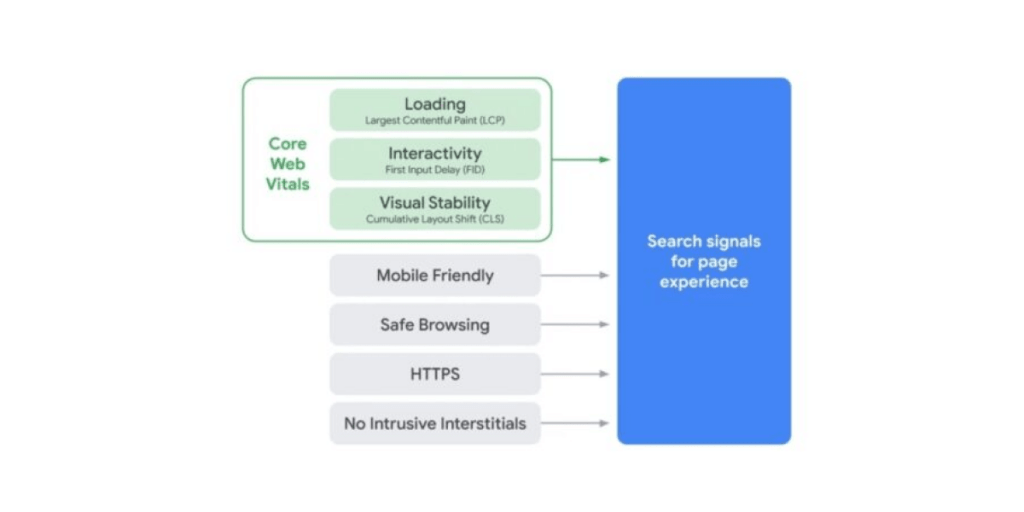Mobile SEO Best Practices – 5 Tips to Improve Your Rankings
Nowadays, businesses are interested in improving their online visibility, and most of them are looking to do it fast and efficiently. The truth is that digital marketing and mobile SEO is in for the long run. Mobile SEO is about helping the right people finding the exact information, product or service when searching on their mobile devices. The usage of mobile devices has changed our lives and the way we surf the internet. For this reason, SEO implementations change when Google changes its algorithm. Now, mobile-first indexing is one of Google’s priorities.
In this article, we will explore more in-depth mobile search engine optimization, why it is different from desktop SEO, and give you some tips on improving your mobile rankings. Follow along for more information on how to deliver the best mobile experience.
What Does Mobile Search Engine Optimization (Mobile SEO) Mean?

Mobile search engine optimization is the practice of optimizing your online website for tablet and smartphone users. The purpose of this activity is to offer a remarkable mobile user experience to visitors. The focus is on making the mobile website load fast, without issues or drawbacks and presenting high-quality content that matches the user intent.
Mobile optimization includes a series of practices that will make your website resources accessible to search engines and users. When done right, your mobile site will achieve higher search engine rankings and will improve your organic traffic. Organic traffic is the free traffic that comes to your website from the search engine results page (SERP). When it comes to optimizing mobile websites for search engines, Google is by far the most important one because 95% of the mobile search market comes from Google searches.
Why This Massive Shift Towards Mobile-First Indexing?

The massive shift towards mobile happened because the number of mobile searches has exceeded the number of desktop searches. Based on this fact, Google and other search engines started to give more attention and rank higher the web pages that provide a unique user experience on tablets and smartphones.
Furthermore, there’s no denying that mobile use continues to grow at an exponential rate. According to Statista, global mobile phone ownership reached 4.9 billion units in 2017, up from 2.8 billion in 2011. In addition, according to Cisco Visual Networking Index Report 2018, worldwide data traffic generated through smartphones increased by nearly 50% between 2016 and 2017 alone. As such, it makes sense that Google would want to prioritize mobile-first indexing.
As a result of this massive shift towards mobile usage, mobile-friendly sites will rank better. Google also uses a mobile-friendly index when analyzing and ranking website pages. Google’s mobile-first index means that Googlebot primarily crawls and indexes pages from the mobile version of the content’s website.
According to Digital-Stats, 77% of mobile searches happen at work, or home and 17% are on the go. More than that, 75% of the mobile searches generate at least two follow-up actions. This is translated into conversions. According to this infographic, 9 out of 10 mobile searches result in a purchasing or physical store visit. The truth is that mobile searching leads to tangible actions and revenue for most businesses.
You should know is that having a mobile-friendly website will rank well in Google on both mobile version and desktop version. If you have a mobile website that does not operate well on mobile, your rankings will decrease on both versions. Now let’s dive deeper into the factors that can make or break your Google rankings.
What Are The Mobile SEO Ranking Factors and How to Monitor Your Search Engine Rankings?

You should know that desktop SEO still matters if you want to reach the whole spectrum of your target audience, even if digital marketing and SEO specialists prioritize mobile content. As Google emphasis on the mobile-first index, the main focus is on mobile. Therefore, let’s start exploring the mobile SEO ranking factors that we split into technical (mobile-friendly and responsive website) and content:
1. Mobile-Friendly and Responsive Website
For mobile sites to be mobile-friendly, they have to meet the following requirements: to load every piece of content on the page, the visitors to read all the text without zooming or scrolling, and allow users to click on every button present on the website.
More than that, your website must have a responsive design. This means that the website design should adapt to any mobile screen size it’s being viewed on. To make your website responsive, you have three choices responsive web design, dynamic serving or dedicated mobile site. A fantastic site should have an eye-candy design, be easy to navigate and perform well on any mobile device. Responsive websites are needed to rank well on mobile and desktop. The best part of making your website responsive is that you do it only once and enjoy the benefits afterwards.
Google is offering support to anyone that wants to implement responsive design. You can get this free course on responsive design. Also, you have the text-based version of the course on the Web. Dev website. More than that, Smashing Magazine released a comprehensive guideline on responsive design.
Another factor that you should consider is the site load speed. Fast loading times don’t bring benefits only to user experience, but they matter for mobile SEO. Some of the benefits of fast loading websites are decreasing bounce rates, increasing conversion rates, and improving user experience and engagement. We wrote an article exploring the importance of page speed in search engine optimization that will offer you more in-depth knowledge of optimising your website’s speed.
Besides that, the design of your website matters on mobile. Your website should look and feel the same on any type of device. Pay attention to your buttons and make sure that all your call to action and links are easy to click and are visible.
All in all, SEO for mobile is not that different from SEO for desktop. The content, technical optimization, internal linking, and external links determine how well your pages will rank in mobile SERP. Some of the rules and guidelines that apply to desktop sites do apply to mobile sites. However, they separate when it comes to user experience. For instance, the way you present the information on your mobile website is different because of the screen size and technology limitations. One example is the text and the call to action buttons size. These elements are easily clickable for desktop users, but on mobile, a user can have difficulties clicking the buttons as they use their fingers, not a cursor. Suppose you don’t pay attention to these elements. In that case, it can result in users having a hard time navigating to the wanted content, which will lead to frustration, and abandoning your mobile website. This will send poor user experience signals to Google, and as a result, your ranking will suffer.
2. Content for Mobile Website
Even if your website is mobile-friendly, this does not mean that your content is optimized for mobile search. Mobile users have become the majority. Therefore your business must have mobile-optimized content. As a result, all the content consumption, interaction and searching are happening in a mobile environment. Thus, your content should be written with the behaviour of mobile users in mind.
To ensure the mobile visitors are thoroughly enjoying your content, we would like to point out some essential steps to help you improve your mobile content, such as rewrite your articles. When you develop a blog and use long-form content, we strongly advise you to break your content into shorter paragraphs. HubSpot says that a 3.000-word blog post is terrific for desktops but can scare mobile readers. Besides breaking your article into small sections, you can use infographics and screenshots. More than that, pay attention to the formatting of your content for mobile screens.
When mobile visitors have to squint or zoom in on the page to read what’s on it, they won’t spend too much time reading your content. More than that, they cannot access or navigate different sections of your mobile website. This will result in losing potential customers and increasing the bounce rate.
Do not use Flash as iPhones do not support it. We recommend using HTML5. This way, iPhone users can enjoy your content. Also, pay attention to the contrast between your text and the page’s background. Many people use their smartphones outside, and low contrast can make your mobile web pages hard to read.
Another element you should pay attention to is the title tag’s length. Sometimes Google is cutting the title tag, and it might cut some essential information from the mobile Google search results. Not optimizing your title tags for mobile can lead to low click-through rates, a high bounce rate, and attracting irrelevant organic search traffic. The sum of these factors results in poor usability signals for the search engines.
Luckily, you can test how your website pages look on a mobile device using the Google Mobile-Friendly Test tool.
It is crucial to understand how mobile users search on mobile devices. They might type keywords and use voice searches or other applications that help them find the information they need without even having their mobile devices in hand. Therefore, your mobile SEO strategy should focus on making any piece of content on your website engaging to mobile users and prepare your website for Google’s mobile-first index algorithm.
Monitor Your Search Engine Rankings

The best way to monitor your mobile traffic, desktop traffic, conversion rates, bounce rate, and your website’s overall progress is to install Google Analytics. This free tracking tool is very complex, and you can extract various reports from it to monitor the current performance on your website and your progress.
Google Analytics is a free tracking tool. It can be very complex, but many reports are only a few clicks away that could be very helpful. Using the Channels report will show you how your organic traffic compares to all other traffic to your website. Analytics will give you an overview of traffic, user behaviour and most importantly, the landing pages that users find on the SERP.

As Google Analytics is not providing other information such as keywords, site errors or page experience, Google Search Console comes into play to complete your efforts. Google Search Console will offer you details about your organic search rankings and keywords people search for. This will help you understand how each page of your website ranks for a specific keyword for users search queries. More than that, Google Search Console will warn and show you if your website has technical issues that can affect your organic search rankings.
Now that you have an idea about how technical factors and content can affect your website, we will offer you five tips to improve your mobile rankings.
5 Tips to Improve Your Mobile SEO Rankings
You need to know that Google monitors over 200 ranking factors when determining how good or bad a site will rank. The ranking signals can be hard to understand. Therefore, adjusting your website accordingly can be difficult.
As we mentioned above, the most important ranking factors are focused on your website’s content and performance. Our advice is to focus on the following aspects to improve your mobile SEO rankings:
Tip 1 – Focus on Your Mobile Content

Every year, Google changes its algorithm and rolls out core updates that affect the ranking of websites. The Panda update is the brick of how Google determines the content quality of websites. This algorithm can identify thin content, duplicate content and can penalize websites by lowering their rankings.
Every aspect of your mobile content is essential. From URLs to titles, text format and metadata, content is one of the most influential factors on search engine rankings.
Our recommendation is to focus on creating relevant content for your mobile users. This implies identifying the user intent and the keywords mobile users use. Use your keyword phrase in the first and last paragraph of your content, and several times in the body of the text, focus on long-tail keywords as they are more specific. Link to relevant sources that support your claims and organize your mobile content by using heading tags (H1, H2, H3, etc.). Use bold or italics to highlight relevant parts of your content.
This is not all. We strongly advise you to create a content marketing strategy that also includes updating your mobile content regularly. By doing so, search engines are receiving signals that the website is relevant. Set a schedule for a content refresh, do keyword research and make the needed adjustments.
Another way to keep your mobile website relevant is to start a blog. Blogging is a great way to boost your search engine rankings. The topics of your blog posts can be about your company, updates or news about your business, products or services and industry-related trends. More than that, you can choose target keywords and write an article around them by promoting your services or products. Be aware that the topic you write about should be connected with your business, products or services you provide. Make sure you do not overuse keywords, as this will lead to keyword stuffing and instead of advancing your rankings, you will decrease them. If you want to start a blog but don’t know where to start, we have written a practical guide on how to write articles for SEO that might give you an idea of how to do it the right way.
Do not forget about optimizing your metadata, such as title tags and meta descriptions. Think of these as a business card for your mobile website. The title is displayed as the headline on the search results page, and the meta description gives a short overview of what customers can find on that specific page. Mobile browsers use the description to return the search results that match the user’s query.
When linking to other websites, use a relevant keyword to add your external link instead of attaching the link to a “click here” text. Click here has no value to search engines. Instead, use a rich keyword such as the website’s name or the study you are linking to. This will add value to your readers, increase your rankings and the ranking of the page you refer to.
Lastly, make sure you use alt tags. When you add an image or a video to your mobile website, make sure you add the alternative text description (alt tag). Search engines use them to understand what that media is about and locate your page. Make sure you are descriptive with your alt tags.
Keep in mind that you write the content for users, not for search engines.
Tip 2 – Increase the Click-Through Rate
Click-through rate is also a vital part of Google’s algorithm. This metric is calculated as a percentage. CTR is based on the number of clicks you receive from the total number of people searching for a particular keyword phrase. The more appealing you are, the better your listing is compared to the competition. If your click-through rate is higher than everyone else, you will be moved up in the results page on the search engine.
Besides your click-through rate percentage, Google is looking at your bounce rate as well. A lot of businesses use disingenuous title tags and meta descriptions to increase their position on the search results. This method will not bring results as people will leave your mobile page fast if they don’t find what they are looking for. If Google is sending several people to your page and all of them leave your website fast (in a few seconds), the signal Google receives is that your page is not relevant for that search query.
Our advice is to monitor your search traffic for specific keywords and ensure your title tags and meta descriptions accurately advertise what people will find on your page.
Tip 3 – Optimize Your Mobile Website’s Loading Speed
Website speed can make or break your business. Since April 2010, Google started to rank sites based on their loading time. When a mobile website takes more than 3 seconds to load, you will probably lose 53% of your visitors.
The best part is that you can take action and optimize your mobile website. Start by using a CDN (Content Delivery Network). Usually, hosting companies provide this feature. Next, pick a fast server. Do not look for a cheap hosting provider. Look for the best server speed, as this will make a difference in your site speed. Also, clean up your code. If you want to learn more about how to achieve a fast-loading mobile website, read our article on how to optimize your mobile page speed.
Use Google Speed Test to check your mobile page loading time and receive some tips on what actions to take to improve your mobile website.
Tip 4 – Optimize Your Mobile Website for Local Search

Local search is highly beneficial when you have a brick and mortar store. While we use our phones in our homes, they become even more helpful when we are outside. According to Google’s findings, 76% of people that searched for a nearby store or service provider visited the physical location within a day, and 28% of those visits resulted in a sale.
To satisfy the local demand (near me searches), your mobile website should comply with the local SEO best practices. Keep in mind that local search results might look different than the standard desktop searches. Therefore, we have some tips on how to improve your local SEO for mobile and target the right audience.
- You can start by writing local-oriented content. This will improve your local rankings, you will appeal more to your local audience, and it is easier for visitors to engage with you.
- Set up a Google My Business listing. By signing up and filling out all your business details, users can find every needed piece of information about you, from address and phone number to open hours and website. You can read our practical guide on how to sign up for the Google My Business listing and how to add more locations to it.
- Enable the reviews option. Encourage your customers to leave you a review. User’s opinion about your business sends beneficial signals to Google. When your reviews are good, Google understands that your business is valuable for customers. Thus it will rank you up in the local search.
- Add photos. Beautiful, high-quality photos will encourage users to visit your business. 86% of customers are using Google Maps when searching locally. They usually look for reviews, pictures and attributes listed on the GMB profile. Read our step-by-step guide on how to add photos to your Google My Business listing.
- Implement structured data or Schema.org. Structured data allows your mobile website to communicate with search engines. Add your business details, products, services, reviews, etc., to your structured data. This way, Google can grasp all the information in a second and decide if they are relevant in the search results.
- Add contact details. Make sure all your contact information is consistent across all your online business profiles and website. Also, check them out to ensure that they are correct and up to date. In case of any inconsistency, fix it immediately.
Tip 5 – Focus on Improving User Experience
User experience is a complex factor that influences SEO rankings the most. In today’s world, users are the ones that can make a business successful or not. In May 2020, Google announced a new ranking factor – Page Experience. This update rolled out gradually, and it was completed in August 2021. If site speed was the number one factor for a high ranking in the past, Google is slowly shifting to how users experience a mobile website.
Google has launched the Core Web Vitals, “a set of real-world, user-centred metrics that quantify key aspects of the user experience.” We are sure that these metrics will evolve. Still, at this moment, there are three main factors that every business owner should take into account to improve the user experience: loading time, interactivity and visual stability.

Our Expertise

From our experience, most website owners still think that mobile websites are not a priority and that everything they want to develop is focused on the desktop. This statement is no longer valid as 51% of the total internet use comes from mobile. If you don’t have a mobile version of your website, your ranking will not suffer, as Google has already penalized you for not having a mobile-friendly website.
Our opinion is that every business should have a mobile website for their business. Even if your company ranks well, it does not mean that you reach all your potential customers. Having a mobile-friendly and responsive website means that your rankings will increase, and you will reach a wider audience.
As you can see, optimizing your mobile SEO to improve your rankings is not easy. All these ranking factors might seem overwhelming, but you don’t have to optimize your website by yourself. Team up with a great team of digital marketing and SEO experts to take your mobile website to a new level. Check out our portfolio and see for yourself how our expertise helped our partners develop a strong business, and read our reviews for a better understanding of our approach. Contact us today, and let’s pave the road to a healthy growing and strong business.
Frequently Asked Questions
Focus on the content, make sure your website loads in under 2 seconds and pay attention to user experience.
Because Google has a mobile-first index algorithm and because having a well-optimized mobile website will boost the rankings for your desktop website as well.
Monitor the progress of your mobile website by using Google Search Console and Google Analytics.
Use tools such as the Mobile-Friendly Test and Google Search Console.